(5299 products available)

























































































































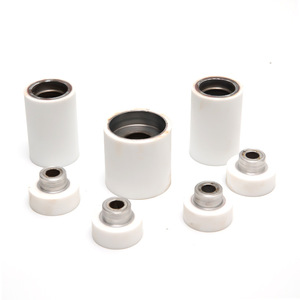














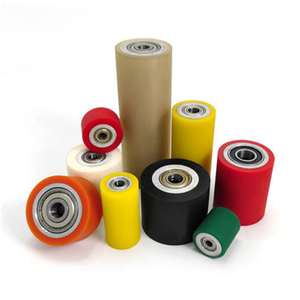









































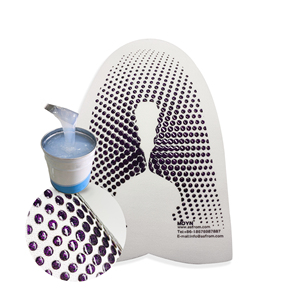


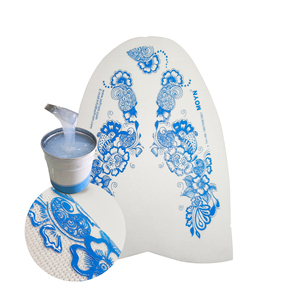



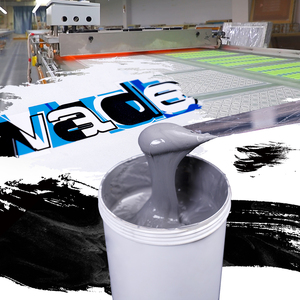






























Embossing silicone ink comes in various types, each tailored to specific embossing needs. It is imperative to understand this variety to choose the option that best aligns with particular production requirements.
Standard Silicone Ink
Standard silicone ink is widely used for embossing on the textile surface. It is principally designed for stretching and adherence to material. This characteristic makes it suitable for use on silicone-inked fabrics. Such features help produce a raised effect that is highly durable. Additionally, it will be noted that this silicone ink remains unaffected by washing, hence maintaining its aesthetic attribute for an extended period.
Heat-Activated Silicone Ink
This type of silicone ink is activated by heat during the printing process. This action sets the ink in a way that enhances the embossing effect. Normally, these inks are principal favorites in industries that utilize high-heat curing processes. Some typical examples are in the textile and leather industries. In these industries, heat can be effortlessly harnessed to achieve the desired outcome.
UV-Curable Silicone Ink
On exposure to UV light, UV-curable silicone ink dries and solidifies quickly. This characteristic makes it highly efficient due to its quick curing time. Normally, this ink is specifically designed for non-porous surfaces such as plastic and metal. Such surfaces are usually difficult to print on using standard inks. Additionally, it provides strong adhesion and weather resistance. These features make it ideal for outdoor applications.
Water-Based Silicone Ink
Water-based silicone ink comes with a less harmful, solvent-free formulation. This form of silicone ink is particularly appropriate for those enterprises wishing to reduce the carbon footprint of their operations. Its suitability for embossing on fabrics further enhances the ink's ecological appeal. It also complies with health regulations.
Plastisol Silicone Ink
In cases where Plastisol ink is preferred, Plastisol silicone ink is available for use. It combines traditional Plastisol properties with silicone’s advantages of flexibility and durability. This mixture is particularly essential for enterprises that require high-performance prints. Plastisol silicone inks work greatly on cotton and polyester surfaces.
Successful application of this silicone ink for embossing requires careful preparation and the right materials. Below is a breakdown of supplies required for the embossing process.
Silicone Inks
Silicone inks are the primary embossing materials used. These inks are available in a variety of colors. Normally, they are selected based on the specific design aesthetic that is preferred. It is worth noting that silicone inks for fabrics are manufactured for durability and flexibility. Their inherent characteristics make them perfect for use on diverse textiles.
Ink Transfer Capping
Certainly, an ink transfer capping is indispensable when working with silicone inks. It allows for even application across the capping's surface during the printing process. Usually, these caps come with protective features that prevent silicone from clogging its nozzles. This effect is critical, especially when dealing with thick, textured inks.
Squeegee
Squeegees are majorly employed for depositing silicone ink onto fabric surfaces. Note that the choice of squeegee's softness or hardness is dependent on the surface to be printed on. Softer squeegees are ideal for textured surfaces. Conversely, firmer ones work better on flat surfaces.
Printing Screens or Plates
These screens are essential for creating distinct, detailed prints on fabric surfaces. Primarily, screens are selected based on the intricacy level and size of the desired design. Usually, screens with finer mesh sizes produce detailed prints. On the other hand, screens with coarser meshes are suitable for simpler designs.
Heat Press or Curing Device
Recently, the application of heat is critical in setting silicone inks. In most cases, heat presses or curing devices are employed to maintain the requisite temperature and time consistency. Normally, the devices used are required to be compatible with diverse fabric types.
Protective Layer
A protective layer placed over the printed design during curing both protects the design and ensures even heat distribution. Commonly, these layers are constructed using parchment paper or Teflon sheets.
Embossing silicone ink offers numerous benefits to companies seeking to elevate their offerings in a competitive marketplace. Knowing these benefits will help businesses take full advantage of what silicone ink has to offer.
Product Differentiation
Silicone inks offer archival properties and a range of tactile and visual effects, which help businesses differentiate their products in a crowded market. This differentiation increases the perceived value of products. Consequently, it leads to enhanced profitability and customer satisfaction. Also, unique finishes attract new customers and increase brand loyalty.
Durability and Performance
Customarily, the primary demand in today’s market, is performance and longevity. Thus, these inks help meet this emerging demand. Normally, these inks are engineered to resist fading, cracking, or peeling over time. This feature makes products highly valued by consumers. People have come to appreciate functional products that look good for a long time.
Versatility Across Industries
Normally, silicone inks find application in diverse sectors like fashion, automotive, and electronics. Usually, their adaptability makes them highly attractive to businesses. To illustrate, the inks work well for textiles and hard surfaces alike. For this reason, companies can use one solution across multiple product lines. This usage leads to reduced operational costs and simplified supply chains.
Meeting Eco-Friendly Expectations
Business practices with sustainability at their core enjoy a competitive advantage in the current eco-conscious marketplace. These businesses also avoid silicone inks with low environmental impact. These inks include water-based silicone inks that contain no harmful solvents. Moreover, they meet stringent environmental regulations. Therefore, they position enterprises to enhance their ecological responsibility as well as their economic performance.
Enhancing Production Efficiency
Silicone inks require simpler application and curing processes than traditionally used inks. So, they enable businesses to increase their production efficiency. This efficiency reduces time and resource expenditure. Ultimately, these time savings give businesses a quicker time-to-market with their products.
Making the right choice for silicone ink for embossing requires careful consideration of several factors. Below are these factors.
Fabric Compatibility
The ink's type and fabric compatibility are usually the principal factors in making the choice. In this case, silicone ink has to be able to bond and work properly with distinct fabric types. Normally, some inks are designed specifically for cotton surfaces. Others work better with synthetic blends.
Ink Viscosity
Normally, viscosity plays a crucial role in achieving distinct embossing effects. Ideally, high-viscosity inks produce thick layers that result in prominent embossed designs. However, they also come with the challenge of requiring more force during application. The opposite is true for low-viscosity silicone inks. They are easy to work with but may have less of an embossing effect.
Durability Requirements
The ink's formulation has to reflect the performance and longevity standards of finishing. For instance, in industries such as fashion, resistance to washing and stretching becomes critical. In such a case, using specialized silicone inks will yield better results because they are designed for enduring wear and tear.
Curing Methods
Different silicone inks require unique curing methods. These methods include heat, UV light, or air drying. This considerable variability in curing methods means that selecting an ink requires evaluators to think about available curing resources. This way, they can ensure they work efficiently and adequately when they start the production process.
Environmental Factors
These days, most enterprises are focused on eco-friendly practices. For such businesses, they will likely prefer water-based silicone inks. This is especially if they are to be used in a finishing service where pollutants' reduction is a priority. Water-based silicone inks have no harmful solvents. This feature makes them suitable for production spaces that need to minimize their carbon impact.
Color Range and Aesthetic
Usually, the choice of silicone ink depends on the desired aesthetic. How so? Different silicone inks have unique finishes, from glossy to matte. They all provide distinct color ranges to choose from. Therefore, one should evaluate these options and select the one that will reflect the brand's aesthetic or its functional requirements.
These inks come in handy in enhancing the performance and longevity of products. Normally, they bind easily to diverse surfaces. This action makes them more durable and resistant to the elements. Also, the inks require less maintenance. These reductions make throughput and productivity increase, improving overall operational efficiency.
A2: Silicone ink offers ecological benefits compared to traditional inks. For instance, one of the most eco-friendly versions is water-based silicone ink. This version contains no harmful solvents. It decreases atmospheric pollution, making the ink suitable for businesses wishing to adopt more sustainable practices.
In the selection, several factors come into play. They include fabric type, ink viscosity, required durability, and available curing methods. These factors help in determining the silicone ink that will best meet the business's operational needs and customer expectations.
Q4: Yes, UV-curable silicone inks work incredibly well with hard surfaces. These inks cure quickly under UV light. This efficiency makes them ideal for such surfaces as plastic, metal, or glass. UV-curable silicone inks bond securely and offer a finish that is both visually appealing and weather-resistant.
Silicone inks are usually durable due to their unique molecular structure. Their structure provides a strong chemical bond to various surfaces. These inks are also resistant to extreme temperatures, UV light, and moisture. They do not fade, crack, or peel either. Overall, this resistance contributes to longer-lasting finishes.